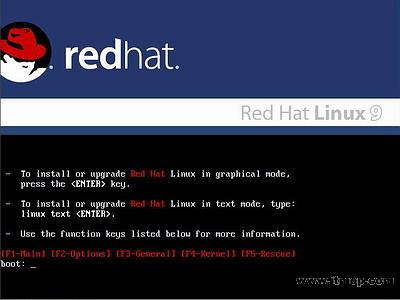

一:前言
我们在之前分析过input子系统和tty设备驱动架构.今天需要将两者结合起来.看看linux中的控制台是怎么样实现的.
二:控制台驱动的初始化
之前在分析tty驱动架构的时候曾分析到.主设备为4,次设备为0的设备节点,即/dev/tty0为当前的控制终端.
有tty_init()中,有以下代码段:
static int __init tty_init(void)
{
……
……
#ifdef CONFIG_VT
cdev_init(&vc0_cdev, &console_fops);
if (cdev_add(&vc0_cdev, MKDEV(TTY_MAJOR, 0), 1) ||
register_chrdev_region(MKDEV(TTY_MAJOR, 0), 1, "/dev/vc/0") < 0)
panic("Couldn't register /dev/tty0 driver\n");
device_create(tty_class, NULL, MKDEV(TTY_MAJOR, 0), "tty0");
vty_init();
#endif
return 0;
}
CONFIG_VT:是指配置虚拟终端.即我们所说的控制台.在此可以看到TTY_MAJOR(4),0对应的设备节点操作集为console_fops.
继续跟进vty_init()
int __init vty_init(void)
{
vcs_init();
console_driver = alloc_tty_driver(MAX_NR_CONSOLES);
if (!console_driver)
panic("Couldn't allocate console driver\n");
console_driver->owner = THIS_MODULE;
console_driver->name = "tty";
console_driver->name_base = 1;
console_driver->major = TTY_MAJOR;
console_driver->minor_start = 1;
console_driver->type = TTY_DRIVER_TYPE_CONSOLE;
console_driver->init_termios = tty_std_termios;
console_driver->flags = TTY_DRIVER_REAL_RAW | TTY_DRIVER_RESET_TERMIOS;
tty_set_operations(console_driver, &con_ops);
if (tty_register_driver(console_driver))
panic("Couldn't register console driver\n");
kbd_init();
console_map_init();
#ifdef CONFIG_PROM_CONSOLE
prom_con_init();
#endif
#ifdef CONFIG_MDA_CONSOLE
mda_console_init();
#endif
return 0;
}
经过我们之前的tty驱动架构分析,这段代码看起来就比较简单了,它就是注册了一个tty驱动.这个驱动对应的操作集是位于con_ops里面的.
仔细看.在之后还会调用kbd_init().顾名思义,这个是一个有关键盘的初始化.控制终端跟键盘有什么关系呢?在之前分析tty的时候,曾提到过,. 对于控制台而言,它的输入设备是键盘鼠标,它的输出设备是当前显示器.这两者是怎么关联起来的呢?不着急.请看下面的分析.
三:控制台的open操作
在前面分析了,对应console的操作集为con_ops.定义如下:
static const struct file_operations console_fops = {
.llseek = no_llseek,
.read = tty_read,
.write = redirected_tty_write,
.poll = tty_poll,
.ioctl = tty_ioctl,
.compat_ioctl = tty_compat_ioctl,
.open = tty_open,
.release = tty_release,
.fasync = tty_fasync,
};
里面的函数指针值我们都不陌生了,在之前分析的tty驱动中已经分析过了.
结合前面的tty驱动分析.我们知道在open的时候,会调用ldisc的open和tty_driver.open.
对于ldisc默认是tty_ldiscs[0].我们来看下它的具体赋值.
console_init():
void __init console_init(void)
{
initcall_t *call;
/* Setup the default TTY line discipline. */
(void) tty_register_ldisc(N_TTY, &tty_ldisc_N_TTY);
/*
* set up the console device so that later boot sequences can
* inform about problems etc..
*/
call = __con_initcall_start;
while (call < __con_initcall_end) {
(*call)();
call++;
}
}
在这里,通过tty_register_ldisc.将tty_ldisc_N_TTY注册为了第N_TTY项.即第1项. tty_ldisc_N_TTY定义如下:
struct tty_ldisc tty_ldisc_N_TTY = {
.magic = TTY_LDISC_MAGIC,
.name = "n_tty",
.open = n_tty_open,
.close = n_tty_close,
.flush_buffer = n_tty_flush_buffer,
.chars_in_buffer = n_tty_chars_in_buffer,
.read = read_chan,
.write = write_chan,
.ioctl = n_tty_ioctl,
.set_termios = n_tty_set_termios,
.poll = normal_poll,
.receive_buf = n_tty_receive_buf,
.write_wakeup = n_tty_write_wakeup
}
对应的open操作为n_tty_open:
static int n_tty_open(struct tty_struct *tty)
{
if (!tty)
return -EINVAL;
/* This one is ugly. Currently a malloc failure here can panic */
if (!tty->read_buf) {
tty->read_buf = alloc_buf();
if (!tty->read_buf)
return -ENOMEM;
}
memset(tty->read_buf, 0, N_TTY_BUF_SIZE);
reset_._flags(tty);
tty->column = 0;
n_tty_set_termios(tty, NULL);
tty->minimum_to_wake = 1;
tty->closing = 0;
return 0;
}
它为tty->read_buf分配内存.这个buffer空间大小为N_TTY_BUF_SIZE.read_buf实际上就是从按键的缓存区.然后调用reset_flags()来初始化tty中的一些字段:
static void reset_buffer_flags(struct tty_struct *tty)
{
unsigned long flags;
spin_lock_irqsave(&tty->read_lock, flags);
tty->read_head = tty->read_tail = tty->read_cnt = 0;
spin_unlock_irqrestore(&tty->read_lock, flags);
tty->canon_head = tty->canon_data = tty->erasing = 0;
memset(&tty->read_flags, 0, sizeof tty->read_flags);
n_tty_set_room(tty);
check_unthrottle(tty);
}
这里比较简,不再详细分析.在这里要注意几个tty成员的含义:
Tty->read_head, tty->read_tail , tty->read_cnt分别代表read_buf中数据的写入位置,读取位置和数据总数.read_buf是一个环形缓存区.
n_tty_set_room()是设备read_buf中的可用缓存区
check_unthrottle():是用来判断是否需要打开"阀门",允许输入数据流入
对于console tty_driver对应的open函数如下示:
static int con_open(struct tty_struct *tty, struct file *filp)
{
unsigned int currcons = tty->index;
int ret = 0;
acquire_console_sem();
if (tty->driver_data == NULL) {
ret = vc_allocate(currcons);
if (ret == 0) {
struct vc_data *vc = vc_cons[currcons].d;
tty->driver_data = vc;
vc->vc_tty = t
关键词标签:linux
相关阅读
热门文章
 安装红帽子RedHat Linux9.0操作系统教程
安装红帽子RedHat Linux9.0操作系统教程
Tomcat9.0如何安装_Tomcat9.0环境变量配置方法
多种操作系统NTP客户端配置
Linux操作系统修改IP
人气排行 Linux下获取CPUID、硬盘序列号与MAC地址 dmidecode命令查看内存型号 linux tc实现ip流量限制 安装红帽子RedHat Linux9.0操作系统教程 linux下解压rar文件 lcx.exe、nc.exe、sc.exe入侵中的使用方法 Ubuntu linux 关机、重启、注销 命令 查看linux服务器硬盘IO读写负载
查看所有0条评论>>